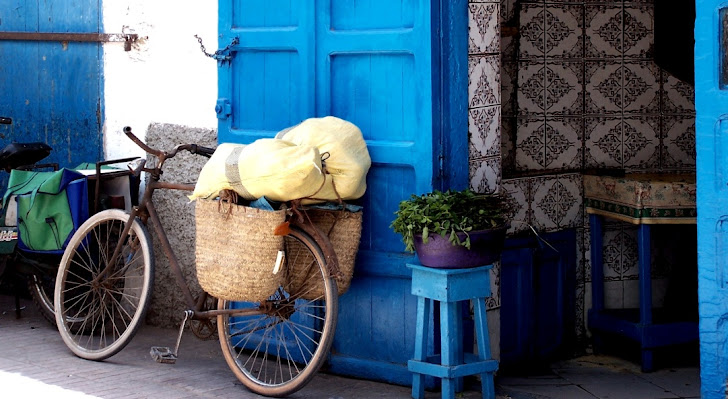
Now, I have this friend who one never knows where he is and tends to disappear in the air like that. Mystery. But when he
is around, he's lovely. One of those that you know you can wake up at 4am to come and rescue you. And one of those with whom conversation seems was just put on hold and can be picked up as you have seen him ten minutes before. You know what I mean.
Last week it was his birthday and, I must admit, thanks to Facebook, I remembered to ring him and leave a cheerful message on his answering machine (quite typical). Surprisingly I got called back only two days later.
As he was just back from Korea, he thought it was a nice idea to prepare Korean food. The one you eat in the country side, what my friend calls peasant food. What I had when I stopped in Seoul had probably the same social extraction. Tasty, but quite simple. The ingredients were: Roman lettuce (I'm sure they use a slightly more local one), chopped chillies, garlic, rice cooked with some soy sauce, meat or vegetables coated in chilly and lightly fried, and the secret ingredient: kimchee.
We could talk about kim chee for hours. It's a bit like cod in Portugal or sheep cheese in Italy. The variants are endless. And (according to the locals) they all taste different.
So, kim chee. It is Chinese cabbage which gets fermented in enormous quantities with water, vinegar, ginger, scallion, pepper and sugar. Koreans keep it in barrels for months so that you have 9 months kimchee, 6 months kimchee, 3 months kimchee etc. A bit like whisky or wine.
To me it probably tastes a bit like German krauti with a kick. It is actually not bad. Well last night we had it with all the ingredients listed above. I must admit that it was a bit of a messy business. And considering that my friend forgot to give us napkins, I was glad that I knew I needed to wash my jeans the day after. (Uh, this reminds me I need to put them in the washing machine!).
What you do is: take a leave of lettuce, put a spoon of rice in the middle of it, add the kimchee, a couple of chopped garlic pieces and chillies, and a few bits of vegetables dipped in a yummy sauce. Then, if you can, you make a little bundle and yum it up. As I was greedy and tried to stuff it as much as possible, the gentle bundle fell apart dropping rice and cabbage everywhere. And as I wasn't allowed to use my chop stick as it would have been considered impolite (because it is used to fish from the communal bowls) I sadly left behind a lot of ingredients....sigh!
Apart from the soup, we had everything else that is on the table in this photo I took in a village near Seoul. There I was also gifted with a big slab of steamed liver (yak!)
The magic sauce. It can be used as a healthy starter with crudités. All you need is:
100ml soy sauce
2 tbsp sesame seeds oil
2 garlic cloves finely chopped
half a red chilly
juice of a quarter of a lemon
We dipped (and dipped, and dipped...I couldn't stop myself) leaves of lettuce. But you can use strips of pepper, slices of mushrooms, potatoes.... I'm sure that everyone knew it years ago, but I never did. And it can be used to marinate fish as well and then lightly pan fry it.
A sauce for all seasons!
Like Japanese, Korean (at least South Koreans) love to display their food in very pretty arrangements. Amazing the attention they give to all the little details. The food in the shop windows is clearly made of plastic (it would go off quite quickly I guess, in which case not very pretty anymore!).
I have posted a few photos I took when I was there. It was freezing cold and it had just snowed. I went from the C32 with 80% humidity of Bali to the 2C with snow in Korea....body shock! The details of the temples (very few left in the middle of the city) were fantastic. As well as the prayers left hanging outside of the school with balloons of different colours.
The fish bring luck because it is brings wealth and puts out fires!
I love the mini Buddha in the hole of the tree. Buddhism is the main religion there but Christianity and Confucianism also co-exist.



























































